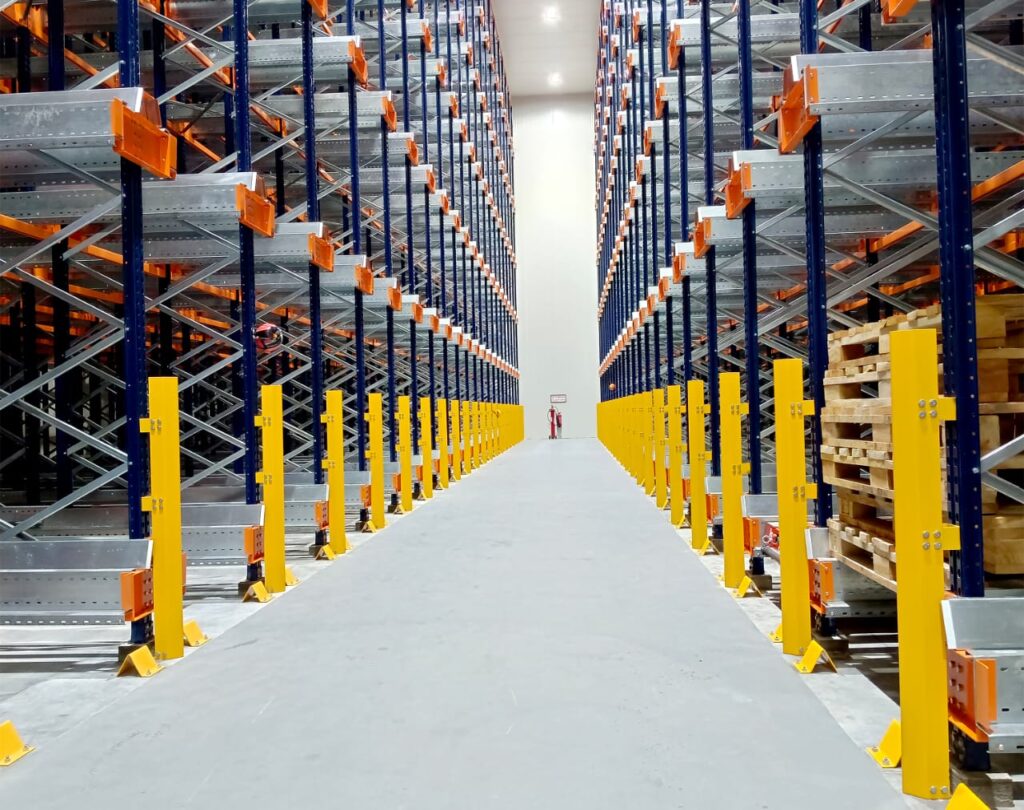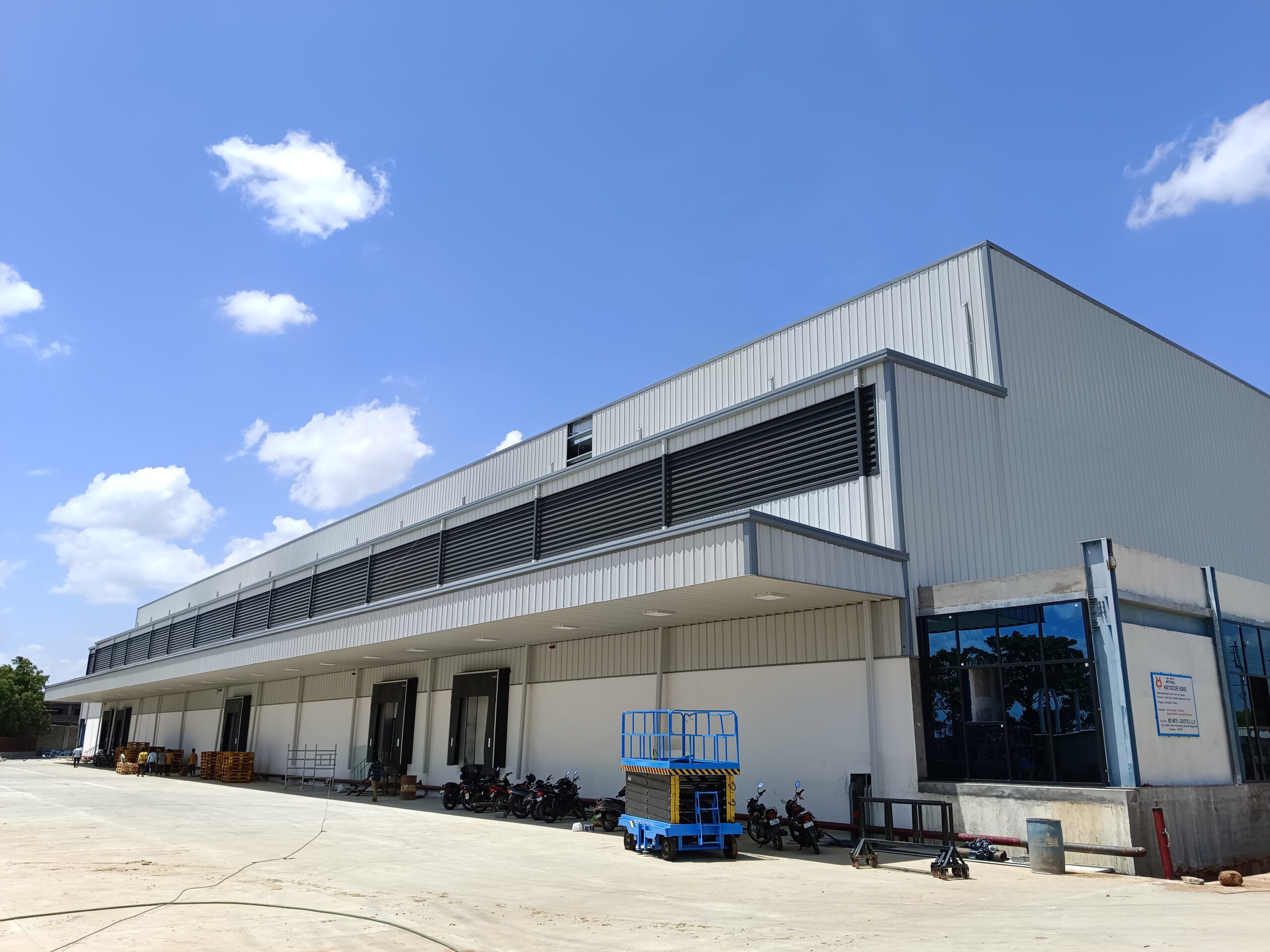Revolutionizing Pharmaceutical Supply Chain Management: The Impact of Extending Warehouses
In the world of healthcare, where every moment counts and patients’ well-being is paramount, efficient supply chain management is a lifeline. Ensuring the timely delivery of vital pharmaceuticals is a complex task, laden with challenges. However, a game-changing solution is on the horizon: extended warehouses.
In this blog, we’ll delve into how extending warehouses can revolutionize pharmaceutical supply chain management, simplifying this intricate process while enhancing patient care.

The Current State of Pharma Cold Storage in India
Pharmaceutical supply chain management is no walk in the park. It includes grappling with fluctuating demand, complying with strict regulations, and facing distribution bottlenecks. It’s a high-stakes balancing act that can sometimes teeter on the edge of chaos. One of the major hurdles is the limited capacity of existing warehouses, making it challenging to cope with these complexities.
The COVID-19 pandemic has put the resilience of various institutions, processes, and systems to the test, spanning different industries and regions. This includes the pharmaceutical supply chain, which has faced mounting challenges in maintaining the cold chain and meeting growing consumer demands. This has underscored the immediate requirement for transparency at every point in the supply chain.
A recent industry survey conducted by FourKites delved into the current lack of visibility in the pharmaceutical supply chain and the pressing industry need for increased predictability and control. It reaffirmed that these concerns are now more critical than ever for pharmaceutical manufacturers. In these specific domains, enhanced visibility in the supply chain can empower manufacturers to adopt a more strategic, forward-looking approach—a significant stride towards achieving comprehensive end-to-end supply chain transparency and management.

The Role of Warehouses: Beyond Storage
Warehouses aren’t just storage spaces; they’re the backbone of the pharmaceutical supply chain. They are bustling hubs of activity, performing a multitude of tasks beyond housing drugs. Think quality control, order fulfillment, labeling, packaging, and distribution. Warehouses play a vital role in ensuring that medicines reach patients safely and swiftly.
In essence, warehouses in pharmaceutical supply chain management are not static storage facilities but dynamic and integral components of the entire system. They are the nerve centers that ensure the safe, efficient, and compliant movement of pharmaceutical products from manufacturing facilities to the hands of patients and healthcare providers. Their pivotal role in maintaining product quality, meeting regulatory standards, and responding to changing market demands underscores their significance in the pharmaceutical supply chain.
Pharmaceutical manufacturers are under immense pressure throughout the entire supply chain, and this pressure extends to the transportation and storage phases. In many cases, manufacturers are responsible for their products until the moment they are administered to patients, even after they enter healthcare facilities. This responsibility introduces several vulnerabilities that demand careful consideration.
Four Key Pain Points in Transporting and Storing Pharmaceuticals
Before delving into the challenges faced in transporting and storing pharmaceuticals, it’s essential to understand the critical pain points that pharmaceutical manufacturers encounter along this crucial leg of the supply chain. These pain points highlight the complexities and vulnerabilities within the pharmaceutical logistics landscape, shedding light on areas that demand innovative solutions for improvement.
- Product Protection and Quarantine: Ensuring the integrity and safety of pharmaceutical products during transportation and storage, including the need for quarantine when necessary.
- Supply and Demand Fluctuations: Coping with the dynamic nature of pharmaceutical demand and supply, which can lead to inventory management challenges.
- Operating Costs and Penalties: Managing operational expenses and potential penalties related to transportation and storage.
- Freight Traceability: Ensuring traceability and visibility of pharmaceutical shipments throughout their journey.
Among these challenges, security and temperature reporting emerged as the most significant concerns.
Temperature Control Challenges
Temperature reporting is a persistent challenge for pharmaceutical manufacturers, particularly in maintaining the cold chain. Failure in the cold chain can have devastating consequences. The World Health Organization reports that more than half of vaccines are wasted globally, and smarter cold chain management could have saved one billion vaccines during the COVID-19 pandemic.
To mitigate temperature-related waste, manufacturers need end-to-end supply chain visibility solutions. These solutions incorporate failsafe technologies like temperature monitors, real-time temperature trend analysis, and instant alerts. Manufacturers can connect with carriers and locations to receive alerts if conditions deviate from acceptable parameters, ensuring the protection of crucial medicines and financial interests.
Security Concerns
Product theft has historically been a significant challenge for pharmaceutical manufacturers. Nearly one-third of survey respondents cited product protection as their top pain point. The United States ranks among the top countries for pharmaceutical cargo theft, with incidents ranging from facility break-ins to truckload thefts.
While physical security measures, such as hiring security services and deploying decoy shipments, are commonly employed, manufacturers should also consider IoT-based sensor tracking. These technologies provide real-time data and alerts, offering deeper insights into product security and status. Manufacturers can track shipments around the clock, receive alerts for unexpected stops or route diversions, and identify high-risk areas for potential theft.
Inbound and Outbound Challenges
Pharmaceutical manufacturers face various challenges in both inbound and outbound supply chain operations. Inbound challenges include:
- Supplier manufacturing visibility
- Supplier compliance
- In-transit product visibility and ETA (Estimated Time of Arrival)
- Purchasing process
Outbound challenges include:
- Visibility and ETA
- Carrier availability
- Temperature monitoring
- Coordination of delivery windows
- Security compliance
To address these challenges, end-to-end visibility solutions are crucial.
Predictive ETAs play a vital role by providing accurate shipment locations, helping manufacturers save time and resources while avoiding costly expedited measures. These solutions enhance efficiency and prevent inventory swings caused by shifts in consumer demand.
Advanced yard management systems further protect manufacturers’ bottom lines by offering real-time visibility into in-transit and in-yard freight. This technology enables workflow automation, SKU-level inventory visibility, and dynamic appointment schedule adjustments based on actual arrival times.
The Extended Warehouse Concept: Exploring the Benefits
For the pharmaceutical industry, it’s imperative that they have an internal warehouse within their manufacturing unit. Warehousing is a fundamental requirement for any industry or manufacturing unit. Without internal warehousing, international accreditations cannot be secured.
When constructing a warehouse, it’s crucial to consider the prospects for the next five years. As product volumes are expected to increase over this period, the warehouse’s capacity and capabilities will significantly impact revenues.
Moreover, it’s essential that the extended warehouse maintains the same accreditations as the manufacturing unit, with the exception of international accreditations. Additionally, attention should be given to material safety and how it is handled. If the Standard Operating Procedures (SOPs) align with established standards, outsourcing the stock becomes a viable option.
This gap in pharmaceutical supply chain management can be effectively filled by the implementation of an extended warehouse. An extended warehouse is an expanded and technologically advanced storage facility strategically designed to meet the evolving needs of pharmaceutical manufacturers. It goes beyond traditional warehousing by incorporating features like state-of-the-art temperature control systems, real-time tracking, and advanced security measures.
This modern warehouse not only accommodates the growing inventory demands over the next five years but also ensures compliance with stringent international standards, addressing material safety concerns. In essence, an extended warehouse acts as a pivotal solution that bridges the gap between increasing pharmaceutical production and the imperative for maintaining quality, security, and regulatory compliance in the industry.
Technological Innovations Driving Warehouse Extension
Technology is the driving force behind extending warehouses in the pharmaceutical industry. We’re talking about warehouse automation, the Internet of Things (IoT), Artificial Intelligence (AI), and predictive analytics. These innovations supercharge inventory management, monitor conditions to safeguard sensitive products, and streamline operations with surgical precision.
Embracing Innovation for a Resilient Pharmaceutical Supply Chain
At Gubba, we are dedicated to becoming your trusted partner in cold storage preservation.
If you’re interested in delving into our services or would like to learn more, don’t hesitate to reach out to us:
contact: +91 91210 42626


